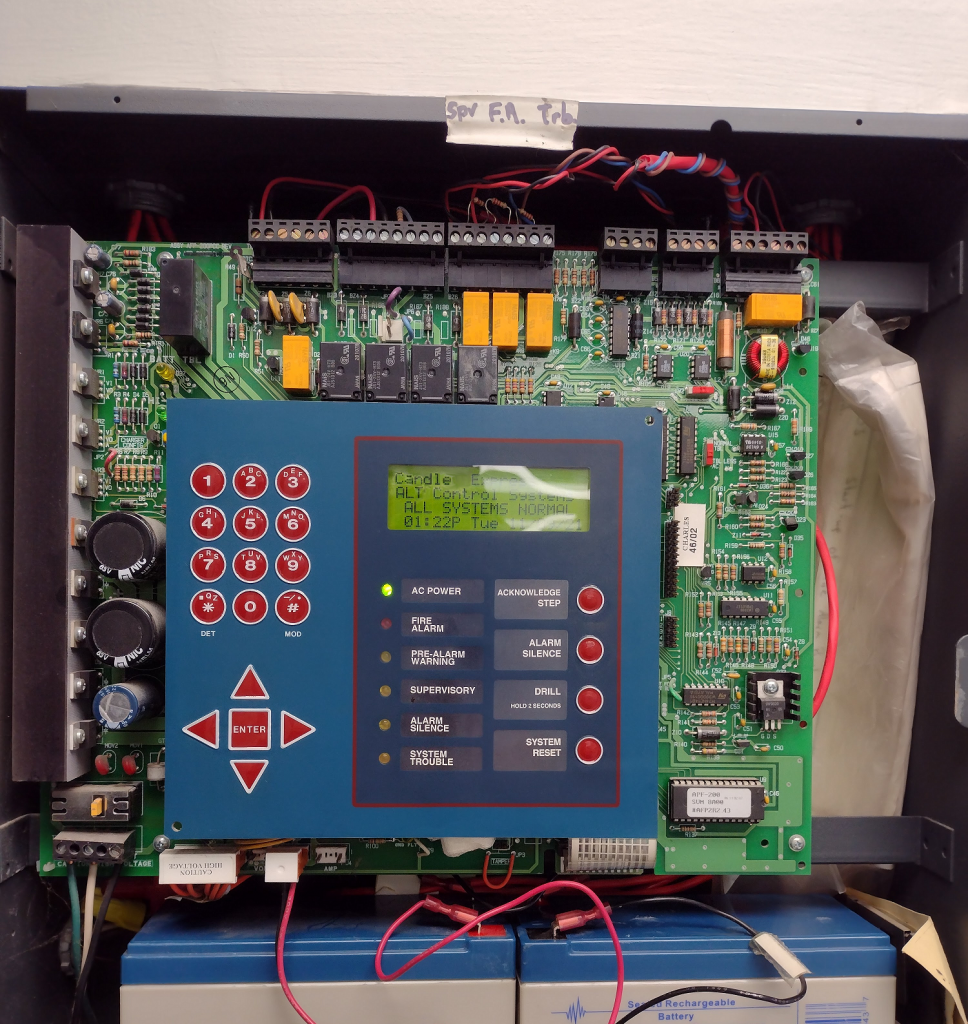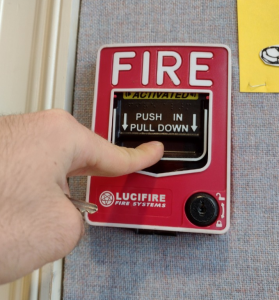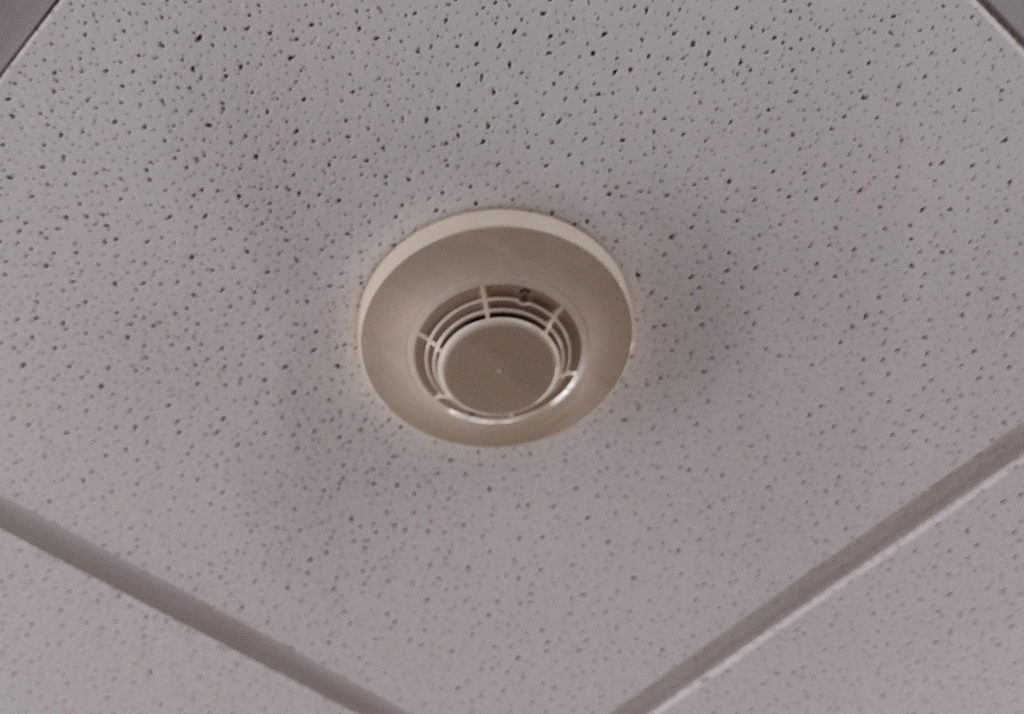Prissy unlocked the panel door with her shiny new Lucifire key. The system was normal, and the wiring was satisfactory, meaning we could move on to the next part of the test.

Disabling the module was actually mistake, as Amanda wanted us to test the signals before the store opened. I was able to log into the security radio channel on OmniTalk, and instructed the guard on how to reenable the module. Once the disable trouble cleared on security’s end I had Prissy activate the GGL-12LX pull station by the entrance.
Pull down!! Fire alarm, activate!
Nothing. The pull station was jammed – our first deficiency. Upon further inspection, she had found that the bottom portion of the lever was being obstructed by the fabric of the bulletin board, which had recently been added during a minor renovation. I took a closer look just to be sure.

The problem with these pull stations is that a portion of the lever protrudes from the bottom when pulled, making it vulnerable to obstructions like this. What the devil was Lucifire thinking when they designed these? (I’ll see myself out, now.)
I opened the pull station and threw the switch, activating the alarm. The signals were Matchlock NS-2415W electronic horn/strobes. These units had a retro aesthetic, featuring a number of ridges and “greebles”. This particular model was white, and had a fixed 15 candela strobe. The tone on the NS series sounds like a low-frequency cricket chirp.

Notice that the horns are unsynchronized.
There were four on the sales floor, one in the stockroom, and another in the employee restroom – set on high volume, too! This was what we inspectors like to call an “over-the counter treatment for constipation”. After several seconds, the strobes lapsed out of synchronization.
Being on the older side, the APF-200 lacked a built-in NAC synchro function, so we recommended the addition of a Matchlock DSM-V-12/24-R synchro module. The horn/strobe in the employee restroom did not flash, and should be replaced with a strobe-only unit from the same manufacturer. The signal test took two minutes at the most, after which we reset the system and paged security to confirm that they received an alarm. They did, meaning we could disable monitor module L2M028 again.
Next step was to check the batteries, which failed six months ago due to being older than five years. Upon opening the panel, we saw that they had been replaced with a brand new pair, in good condition and less than a year from the manufacture date. They were 12 volt, 12 ampere-hour, which was more than enough to provide the required 24 hours of standby and 5 hours of alarm. Using the OmniMeter, we performed a voltage check and state-of-health test, which passed at 100%. It was time to test the initiating devices.
You won't get an alarm right away. They're set up for pre-alarm first.
That doesn't actually delay them. A lot of people get it confused with alarm verification.
You see that? This girl knows her stuff!
Well, we could use a delay, since our customers love testing the alarm. Yeah... Sometimes they'll even put the candles in their mouths like cigars.

The system would go into pre-alarm warning if the smoke obscuration reached 70% of the alarm threshold, and Amanda would have to come out and yell at whoever got the bright idea to light a candle in the store. But usually, it would be too late.
